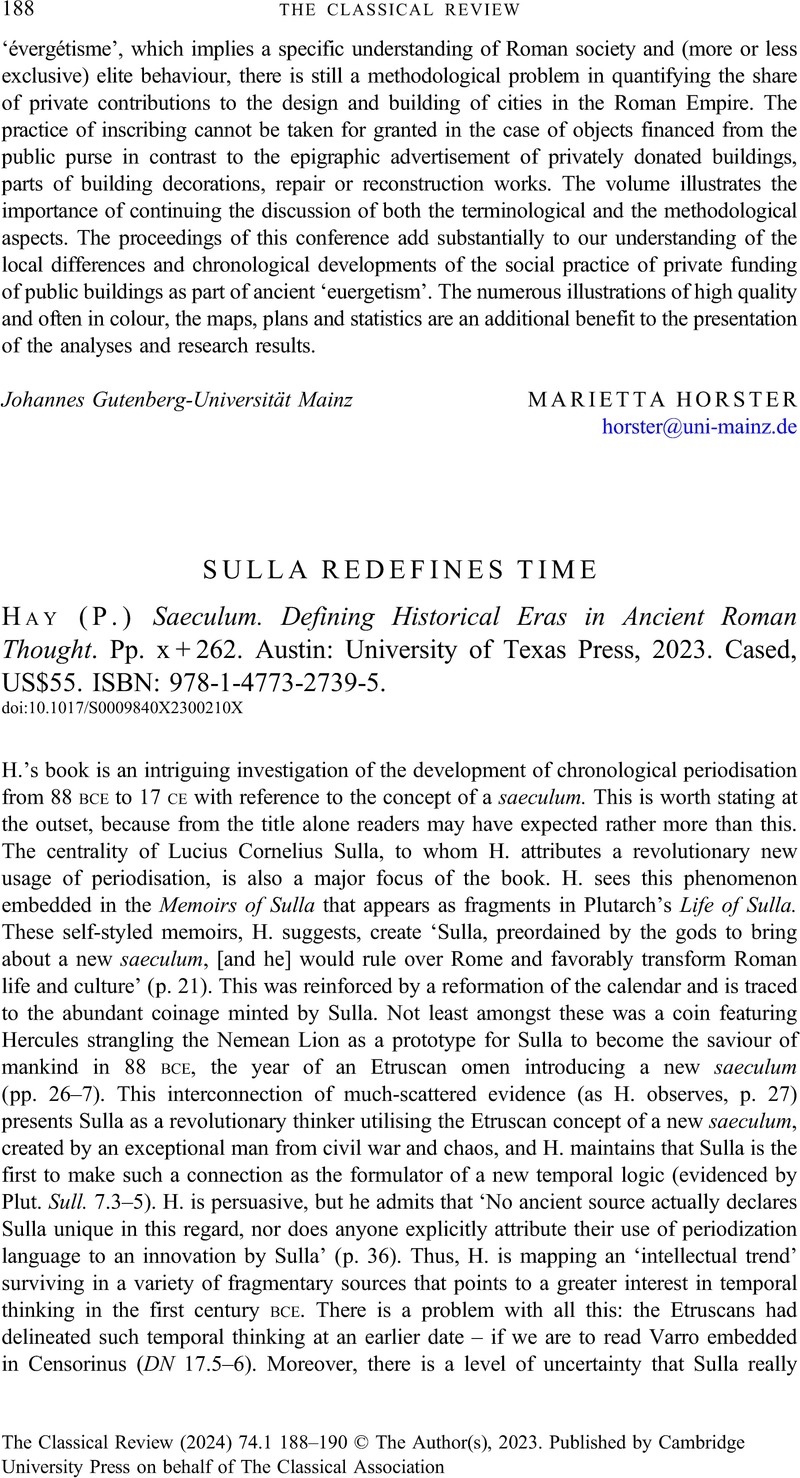No CrossRef data available.
Article contents
SULLA REDEFINES TIME - (P.) Hay Saeculum. Defining Historical Eras in Ancient Roman Thought. Pp. x + 262. Austin: University of Texas Press, 2023. Cased, US$55. ISBN: 978-1-4773-2739-5.
Review products
(P.) Hay Saeculum. Defining Historical Eras in Ancient Roman Thought. Pp. x + 262. Austin: University of Texas Press, 2023. Cased, US$55. ISBN: 978-1-4773-2739-5.
Published online by Cambridge University Press: 13 November 2023
Abstract
An abstract is not available for this content so a preview has been provided. Please use the Get access link above for information on how to access this content.

- Type
- Reviews
- Information
- Copyright
- Copyright © The Author(s), 2023. Published by Cambridge University Press on behalf of The Classical Association



